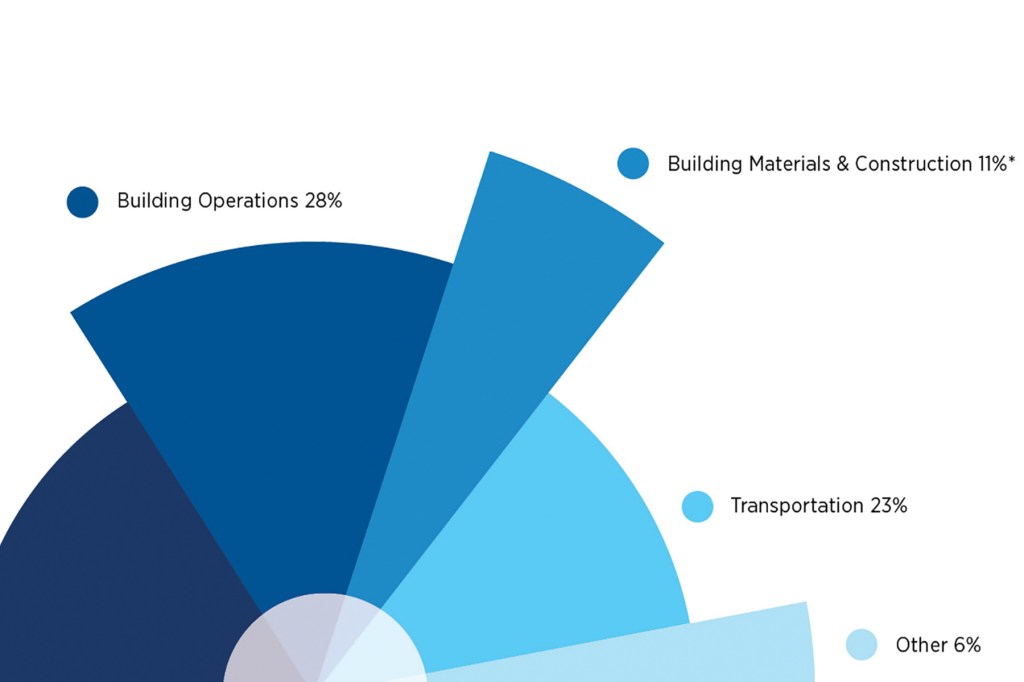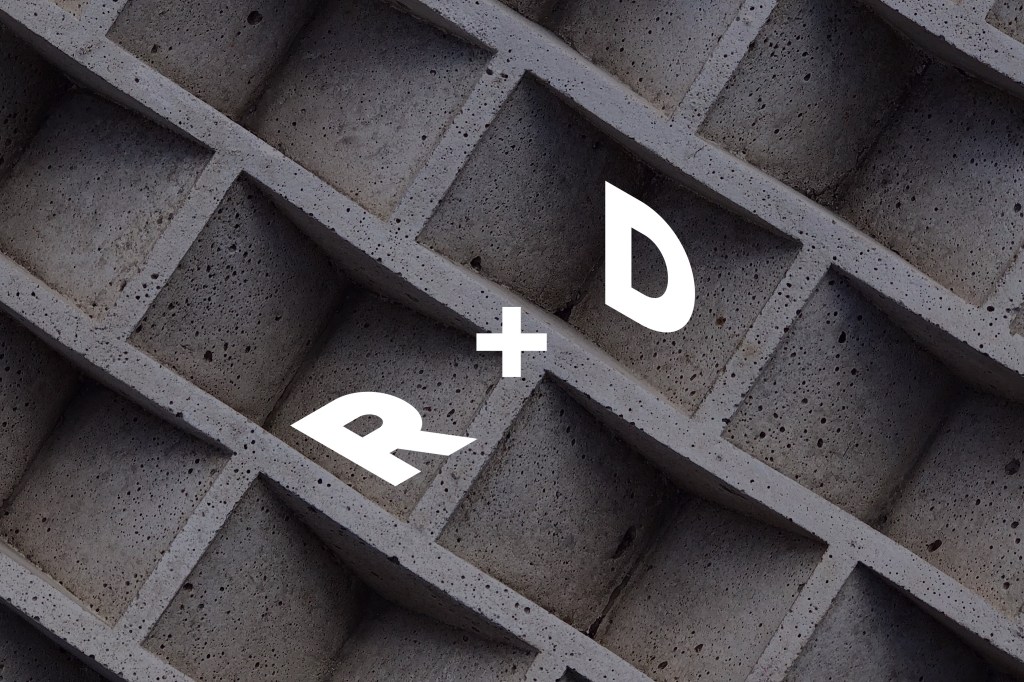“The researchers took a thorough approach in exploring the relationship between material and geometry in order to think about utilizing concrete differently in the industry.” —Juror Mónica Ponce de León, AIA
Anyone working in a minimalist, industrial office will likely attest that spaces filled with hard surfaces can quickly become echo chambers. Currently, concrete—planar, dense, and highly reflective of sound waves—is not the material of choice for acoustical mitigation. However, along with its inherent structural and thermal properties, concrete can be quite porous, not to mention amenable to experimentation with form. To test its noise-control capabilities, researchers at the University of Oklahoma (OU) are developing sawtooth panels made of acoustically diffuse and absorbent lightweight aerated concrete.
Designed for use on walls and ceilings, ADALAC panels can reflect, diffuse, and absorb sound frequencies related to everyday speech. Designers and manufacturers often address acoustical needs with materials that provide either absorption or diffusion, but not both, says Daniel Butko, AIA, associate professor of architecture at OU’s Christopher C. Gibbs College of Architecture. To enhance the porosity of the 20-inch-square, 6-inch-thick panels, Butko and his collaborators, which include Zachary Maggia, AIA, added a powdered aluminum admixture that reacts with the cement during hydration to create hydrogen gas bubbles. The sawtooth structure of the panels, with a subtle convex or concave geometry, was optimized through computational design with the aim of creating an economical, modular solution.
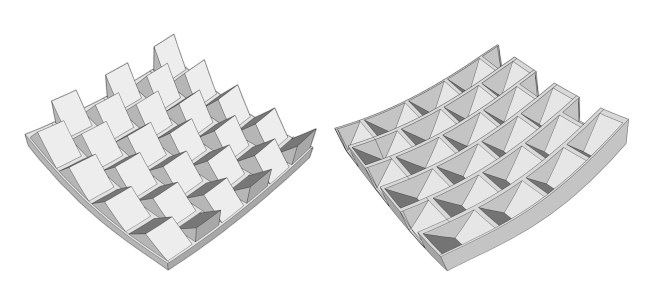
Zachary Maggia
Prototype concepts (l to r): Convex and concave panels

Daniel Butko
ADALAC researchers experimented with panel geometry to optimize the sawtooth and concave curvatures.
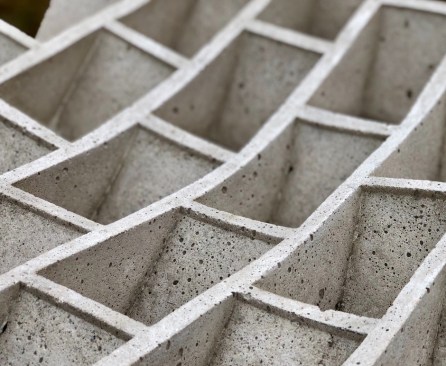
Emily Butko
Testing different prototypes to establish a quantitative baseline quote
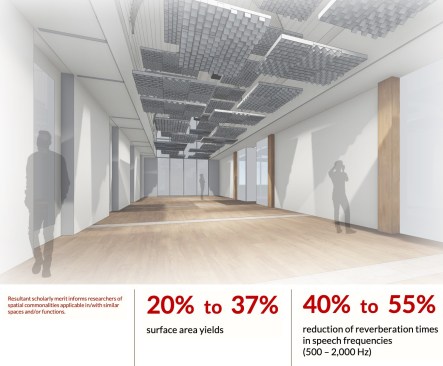
courtesy Daniel Butko, OU Gibbs College of Architecture research team, Coreslab Structures (Oklahoma City), and Riverbank Acoustical Laboratories
Implementation of material and form into reverberation-time reduction
The team measured the panels’ sound absorption, reverberation times, and noise reduction capabilities in the laboratory. Covering 20% to 37% of a room’s wall or ceiling with ADALAC panels yields a 40% to 55% reduction in reverberation times in speech frequencies—at least double the performance of existing aerated precast wall panels on the market.
“Future research will explore utilizing recycled aluminum powder to reduce dependence upon new aluminum, replacing approximately 40% of the cement with fly ash, and developing a method of capturing or exchanging the excess heat created during hydration,” Butko says. He is currently pursuing additional grants and partnerships to further explore the panels’ viability in commercial markets.
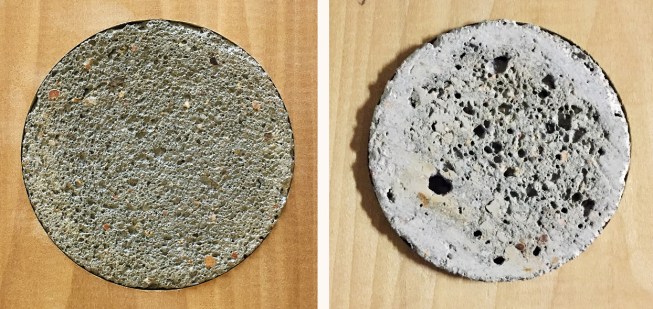
courtesy Daniel Butko, OU Gibbs College of Architecture research team, Coreslab Structures (Oklahoma City), and Riverbank Acoustical Laboratories
Concrete puck mixes, prepped for acoustic tests
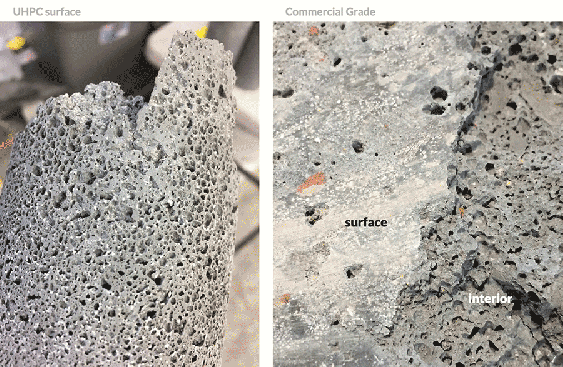
courtesy Daniel Butko, OU Gibbs College of Architecture research team, Coreslab Structures (Oklahoma City), and Riverbank Acoustical Laboratories
Concrete interior and surface porosity
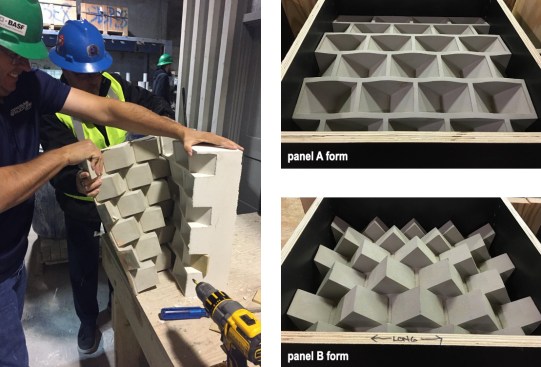
courtesy Daniel Butko, OU Gibbs College of Architecture research team, Coreslab Structures (Oklahoma City), and Riverbank Acoustical Laboratories
ADALAC researchers worked with industry partners to develop panel prototypes.
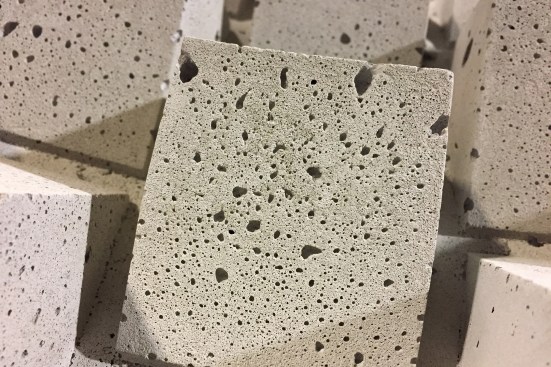
Daniel Butko
"Sound absorption generally increases with the increase in the sample thickness, but the average pore size and the overall porosity also play a key role in the acoustic absorption," says ABB material scientist Marius Rutkevičius.
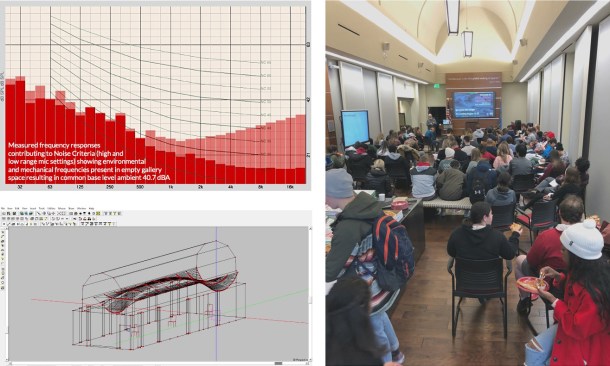
courtesy Daniel Butko, OU Gibbs College of Architecture research team, Coreslab Structures (Oklahoma City), and Riverbank Acoustical Laboratories
Criteria supporting occupant health, safety, and welfare was critical to driving the data-collection process.
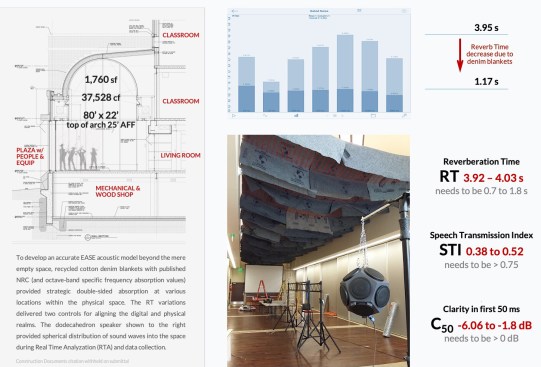
courtesy Daniel Butko, OU Gibbs College of Architecture research team, Coreslab Structures (Oklahoma City), and Riverbank Acoustical Laboratories
Establishing specific acoustical parameters to develop initial understanding of acceptable and possible ranges of sound.
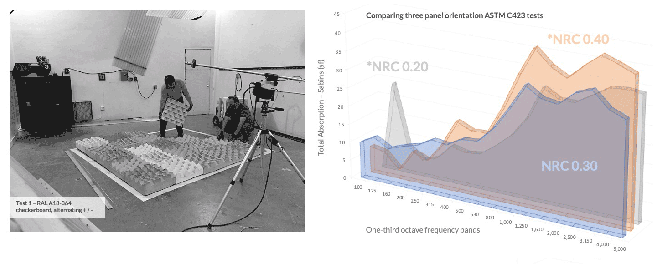
courtesy Daniel Butko, OU Gibbs College of Architecture research team, Coreslab Structures (Oklahoma City), and Riverbank Acoustical Laboratories
Testing different panel orientations for acoustical mitigation at Riverbank Acoustical Labs, Geneva, Ill.
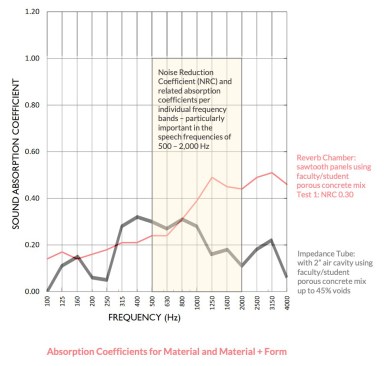
courtesy Daniel Butko, OU Gibbs College of Architecture research team, Coreslab Structures (Oklahoma City), and Riverbank Acoustical Laboratories
Comparing results of material to material and form
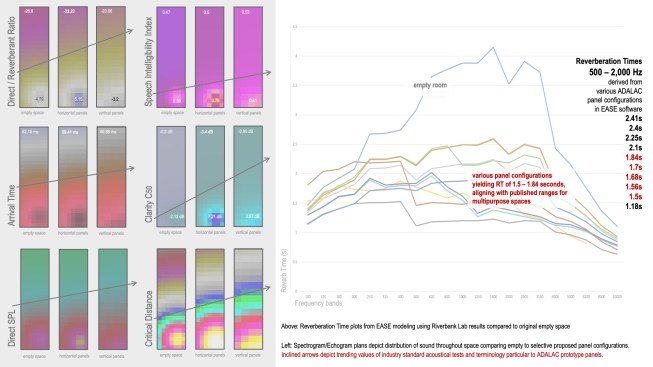
courtesy Daniel Butko, OU Gibbs College of Architecture research team, Coreslab Structures (Oklahoma City), and Riverbank Acoustical Laboratories
Relating laboratory results to design concepts
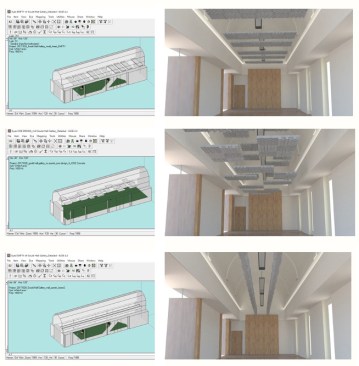
courtesy Daniel Butko, OU Gibbs College of Architecture research team, Coreslab Structures (Oklahoma City), and Riverbank Acoustical Laboratories
Implementation of material and form into reverberation time reduction
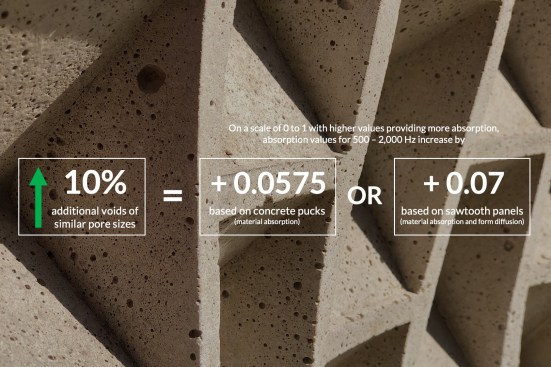
courtesy Daniel Butko, OU Gibbs College of Architecture research team, Coreslab Structures (Oklahoma City), and Riverbank Acoustical Laboratories
The impact of additional voids to absorption coefficients and overall NRC values
Project Credits
Project: Acoustically Diffuse & Absorbent Lightweight Aerated Concrete (ADALAC), Norman, Okla.
Client/Owner: Daniel Butko, AIA (principal investigator, associate professor and Gibbs Research Fellow, The University of Oklahoma Gibbs College of Architecture)
Architect/Architect of Record: Daniel Butko
Acoustic Laboratories: Riverbank Acoustical Laboratories, Geneva, Ill. . Eric Wolfram, Malcolm Kelly, Marc Sciaky; Chesapeake Acoustic Research Institute, Upper Marlboro, Md. . Peter D’Antonio
Structural Engineer and Concrete Mix Consultant and Collaborator: Shideh Shadravan, OU Gibbs College of Architecture
Test Facilities and Materials: OU College of Engineering Fears Lab
General Contractor/Industry Partner (including collaborative fabrication and material supplier): Coreslab Structures, Inc., Oklahoma City . Coleman Harrison, Robert Shade, Stephen Breece, Brent Cosby (partnership and prototype fabrication)
Research Assistants: Zachary Maggia, AIA (acoustic measurements, modeling, and prototype development), Trevor Looney (concrete mix designs), Beau Buesing (concrete mix testing), Collin Abdallah (literature review and data collection), Lindsey Trout (modeling)
Acoustic Research Mentor: Robert Coffeen
Funding: OU Office of the Vice President for Research and Partnerships; OU Gibbs College of Architecture; Coreslab Structures; U.S. Formliner/Reckli, Athens, Ga.; Ashgrove Cement
Size (prototype panel): 20-inch-square by 6 inches
Materials and Sources
Cement: Ash Grove (Type I/II gray cement); Lehigh Hanson (Type I/II white cement)
Forms: U.S. Formliner/Reckli
Additives: BASF (MasterSet Delvo retarder and MasterGlenium 7500); Alpha Chemicals (30-micron aluminum)
-
R+D Award: Long Range Glass
A team from the University of Michigan and Arcgeometer is shaping glass for broader acoustic and optic qualities.
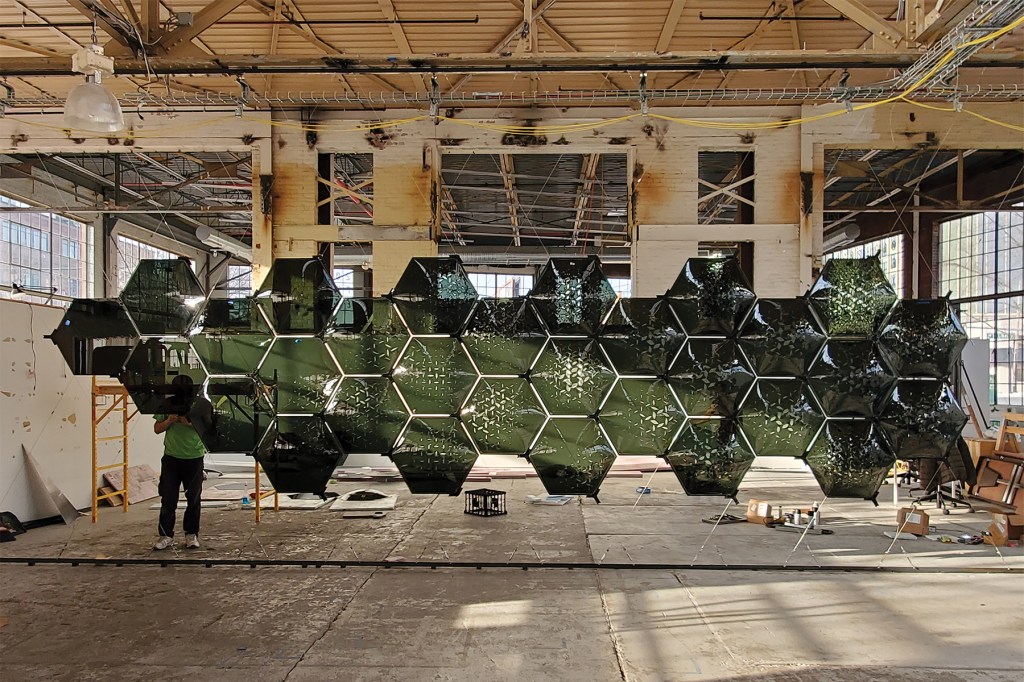
-
R+D Award: Tangential Timber
A team from After Architecture and the University of Virginia School of Architecture proposes a construction application for non-linear wood through the development of a digital fabrication workflow.
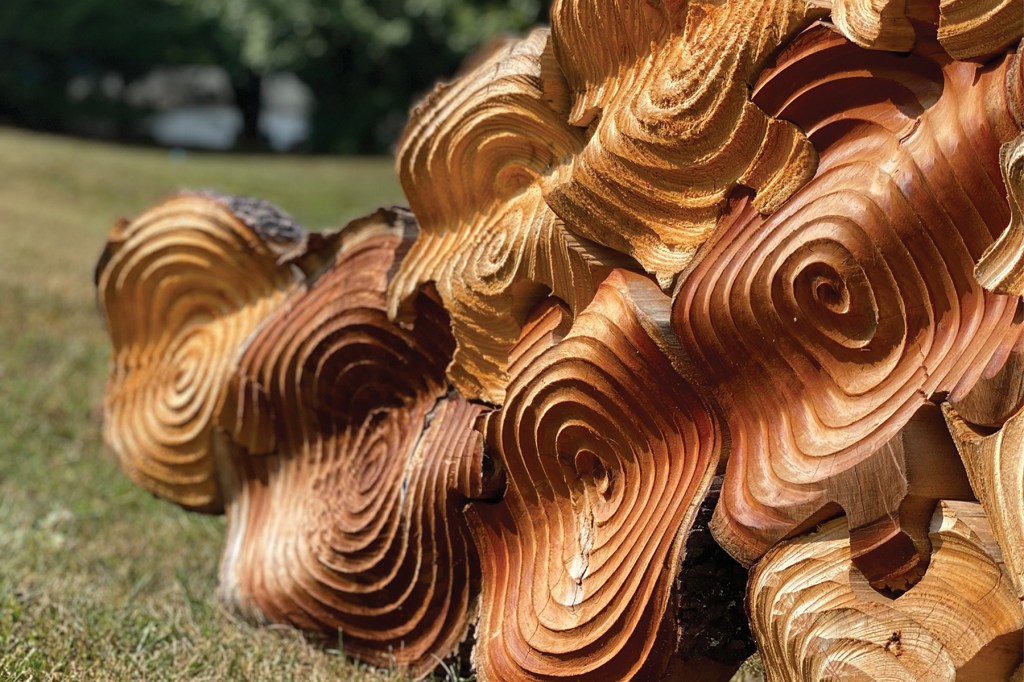
-
R+D Award: V-Soleil
Architecture Research Office collaborated with Heintges Consulting Architects & Engineers to develop V-Soleil, a curtain-like terra-cotta brise soleil inspired by the organic forms.
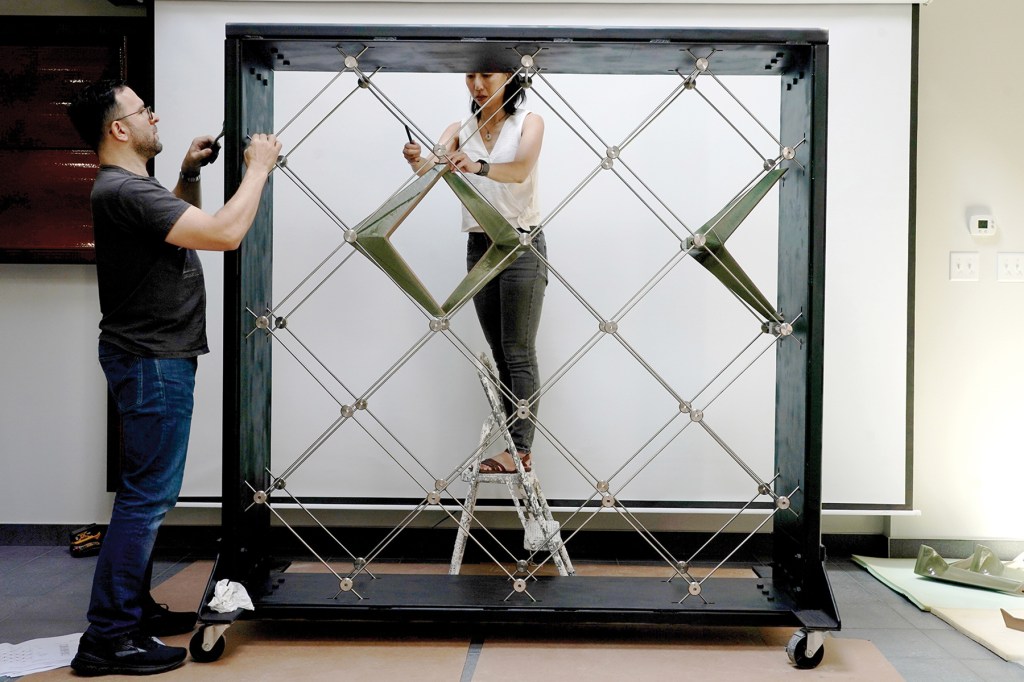
-
R+D Award: Tortuca
A collaborative research team initiated and led by Masoud Akbarzadeh, the director of the Polyhedral Structures Laboratory and assistant professor of architecture at the Weitzman School of Design, created an ultra-thin hollow glass structure, which spans 10.5 feet.
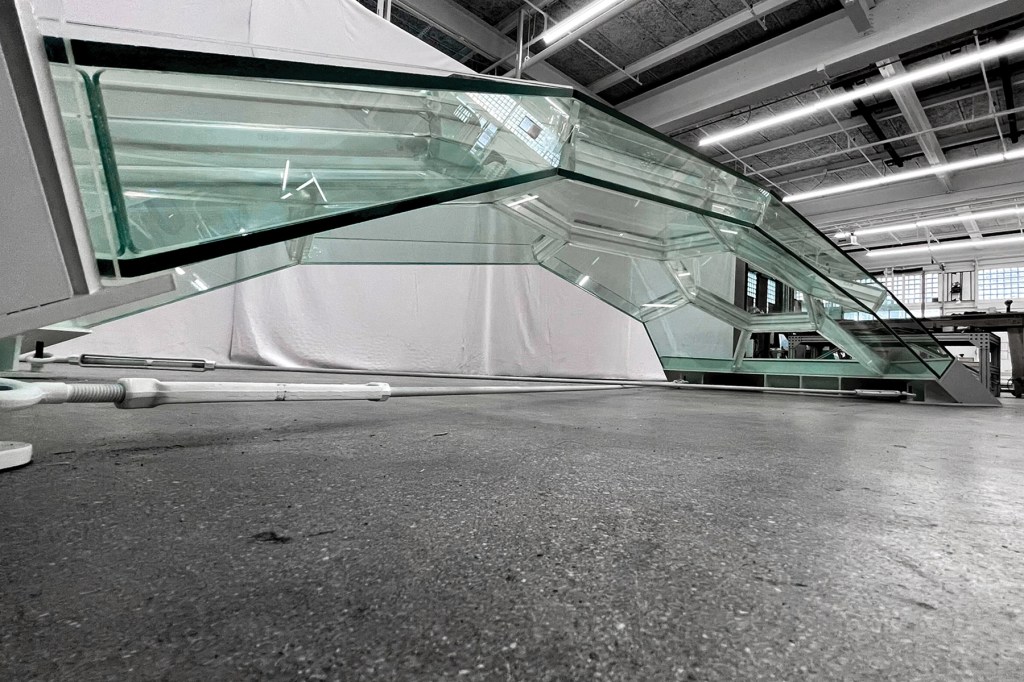
-
R+D Award: E-games-lab—eFargo
A team from the University of Minnesota College of Design and North Dakota State University created an interactive game to help reduce carbon emissions and energy use to fight climate change.

-
R+D Award: Kaleidoscope—Embodied Carbon Design Tool
Payette created a simple and straightforward tool that allows designers to compare the embodied carbon across a range of façade and interior systems.
